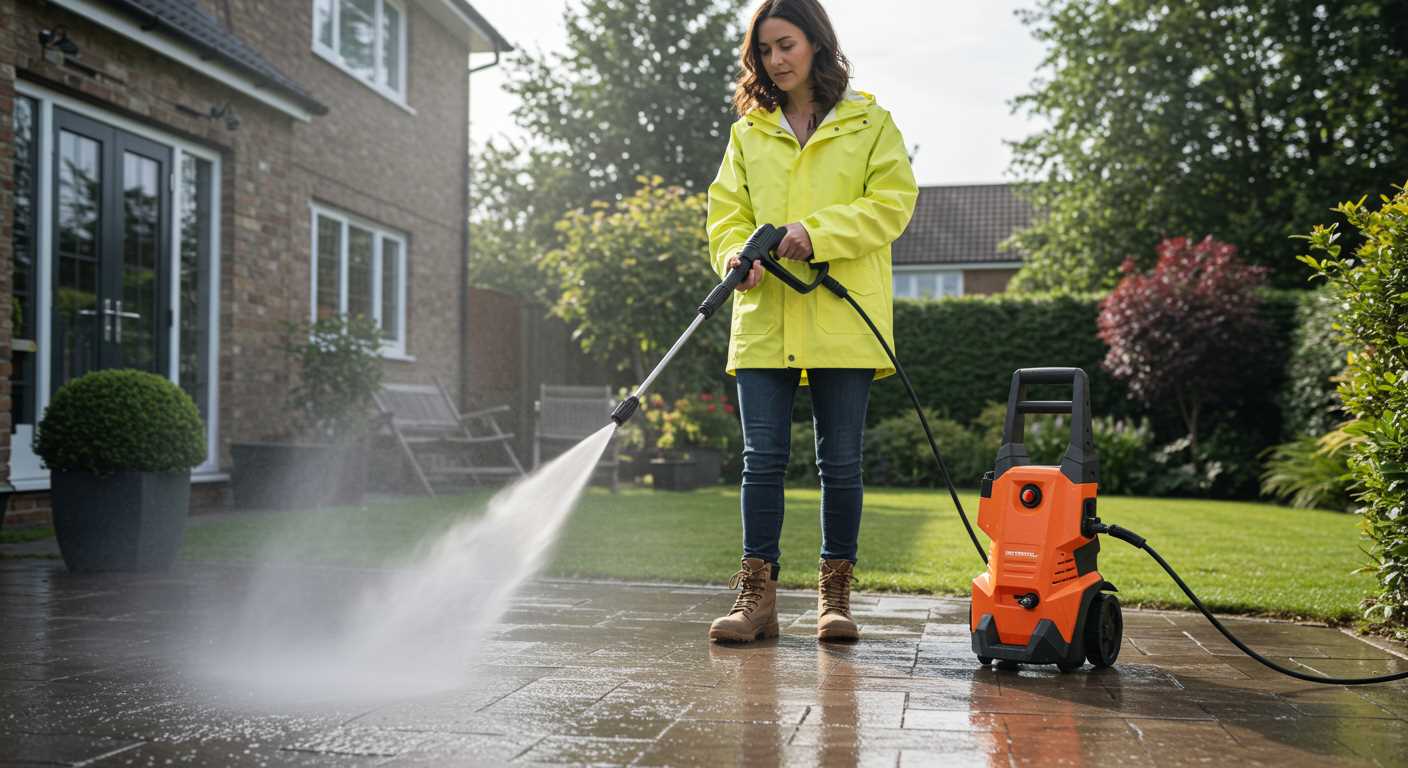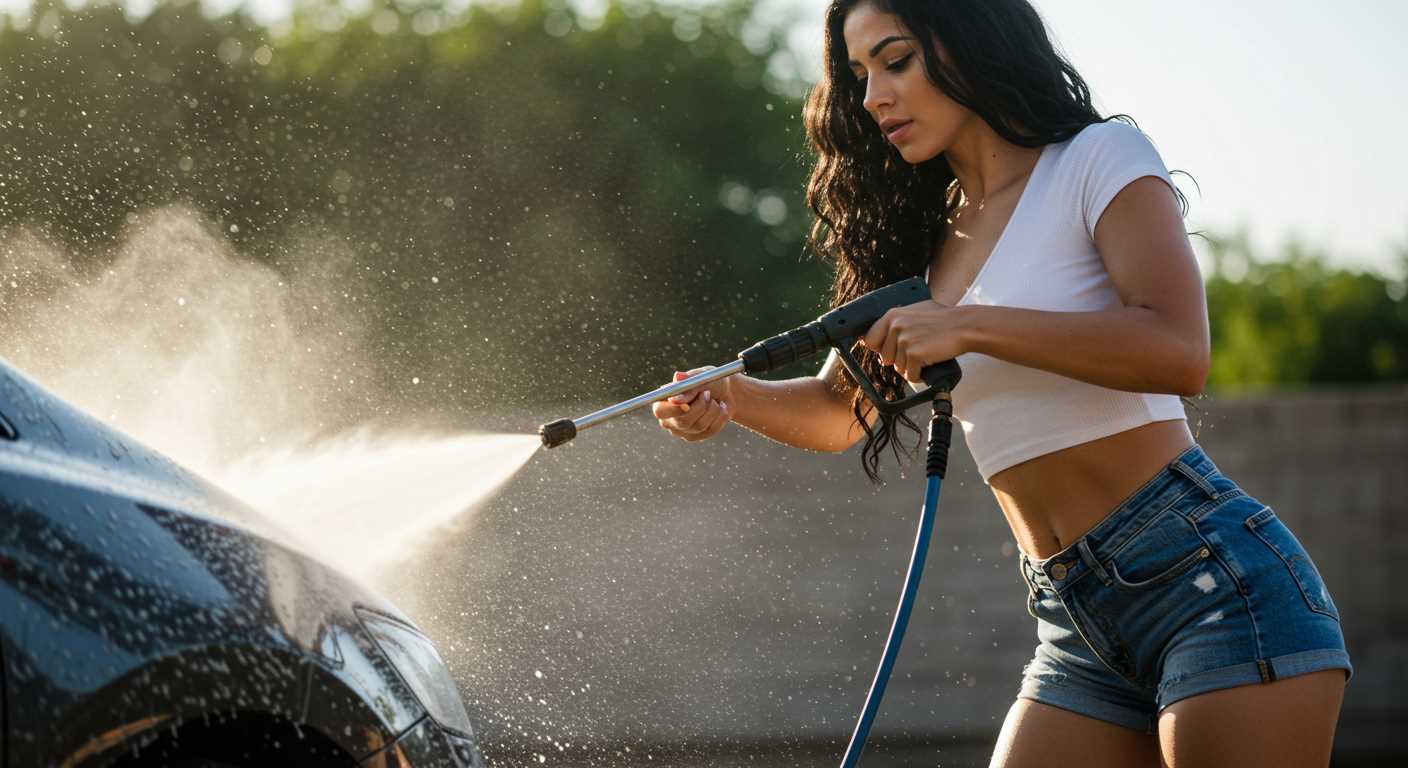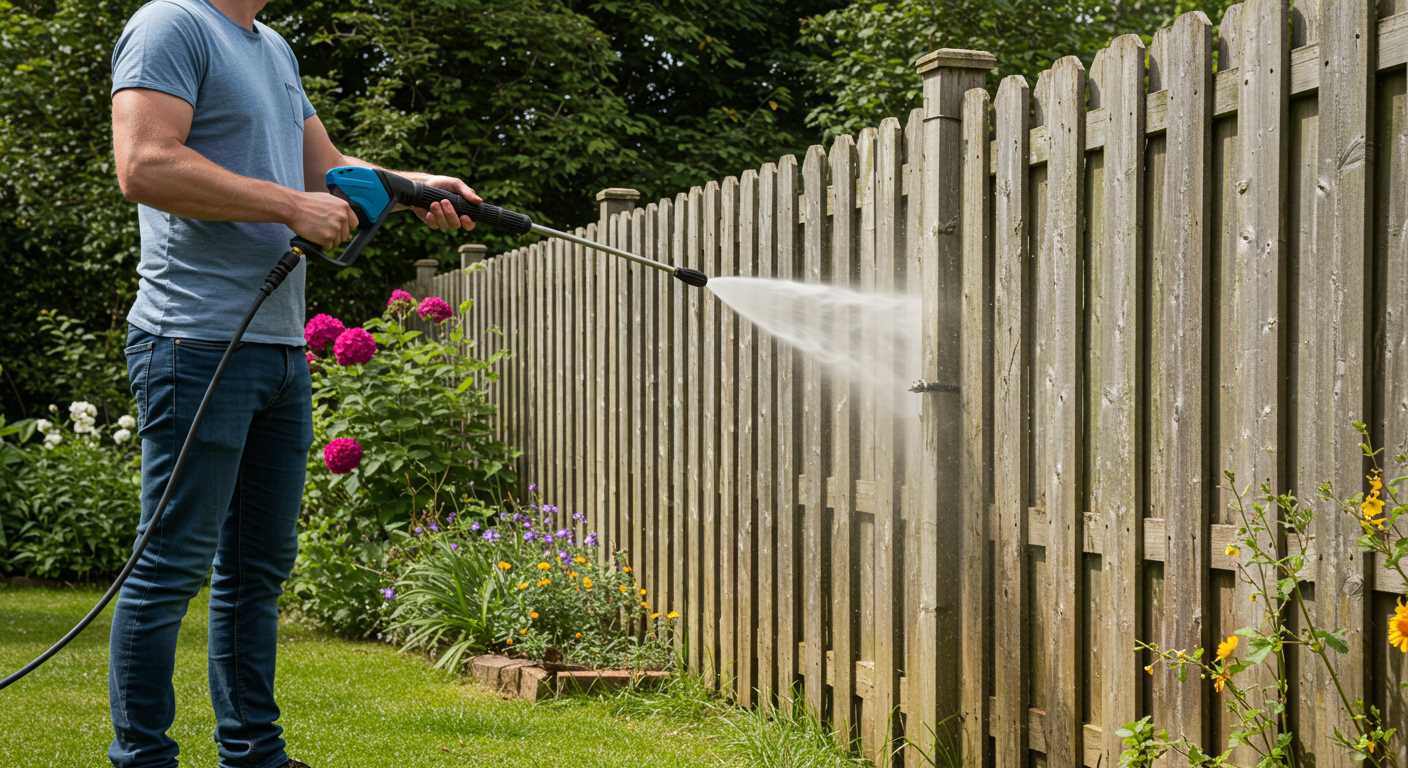



Prioritise the cleaning power, expressed in PSI (pounds per square inch) and GPM (gallons per minute). These measurements indicate the effectiveness of the device in removing dirt and grime. A unit with at least 2000 PSI and 2 GPM is suitable for most residential tasks, while heavier duties might require more robust specifications.
Examine the type of motor. Electric models are quieter and more suitable for light to medium tasks, whereas petrol-powered options offer greater mobility and power, making them ideal for larger areas or tougher jobs. Balance your needs with the available energy sources.
Consider the range of accessories included. Attachments like rotary nozzles and surface cleaners can significantly enhance versatility. A variety of nozzles (0°, 15°, 25°, and detergent) allows you to adapt the output for different surfaces, ensuring optimal results without causing damage.
Check for build quality, especially the materials used in the pump and hose. Brass fittings and durable plastics contribute to longevity and resistance to wear. A sturdy frame not only enhances mobility but also ensures stability during operation.
Don’t overlook warranty terms. A longer warranty often indicates the manufacturer’s confidence in their product, providing peace of mind with your purchase. Understanding after-sales support and service options is equally crucial for maintaining your investment.
Lastly, weigh the size and weight. A compact and lightweight model may be easier to store and handle, but it should still provide the necessary power for your cleaning tasks. Evaluate your storage space and mobility needs to find a suitable solution.
Key Factors in Choosing a High-Quality Cleaning Unit

Prioritise the pressure ratings. A higher PSI (pounds per square inch) indicates greater cleaning power. For heavy-duty tasks like removing paint or grime from concrete, look for a unit with at least 3000 PSI. For lighter jobs, around 1500 to 2000 PSI suffices. Equally important is the GPM (gallons per minute) rating; a higher GPM means faster cleaning.
Types of Machines
Understanding the differences between electric and gas-operated models is crucial. Electric units are quieter, cleaner, and easier to maintain, while gas machines offer greater mobility and power, making them ideal for extensive outdoor use.
| Type | PSI Range | Best Use |
|---|---|---|
| Electric | 1300 – 2000 | Light to medium tasks |
| Gas | 2000 – 4000+ | Heavy-duty applications |
Additional Features to Consider

Pay attention to hose length and wand types. A longer hose allows greater range without moving the unit constantly. Adjustable nozzles add versatility for different cleaning tasks. Lastly, check for features such as onboard storage for accessories and quick-connect fittings, which enhance ease of use and organisation.
Understanding Pressure Ratings and Their Impact
Focus on the cleaning power, which is determined by the pressure rating of the equipment. Pressure is measured in PSI (pounds per square inch). For home tasks like washing cars or patios, a rating between 1300 and 2300 PSI suffices. Anything above 2300 PSI is typically suited for more demanding jobs like stripping paint or cleaning heavy-duty surfaces.
Recognise the significance of GPM (gallons per minute) alongside PSI. This metric indicates the water flow rate and directly impacts cleaning efficiency. A higher GPM means quicker cleaning. Aim for at least 1.5 GPM for effective residential use, but models with 2.0 GPM or higher are preferable for extensive usage.
Be aware of the relationship between PSI and GPM; balancing both is crucial. A unit with high PSI but low GPM might not clean effectively, as the quantity of water needed to wash away dirt may be insufficient. Look for models that offer a good balance–something around 2000 PSI and 2.5 GPM is often ideal.
Don’t neglect the application you intend to use the device for. For delicate surfaces, such as wood decks or cars, opt for lower PSI settings that protect the integrity of the material. Conversely, brick or concrete can withstand higher pressures.
Always consider motor type, either electric or gas-powered. Generally, electric machines offer lower PSI ratings but are suitable for routine tasks. Gas-powered options provide more power, typically ranging from 2500 to 4000 PSI, ideal for professional-grade applications.
Finally, check the model’s compatibility with attachments and nozzles. These can influence the effective cleaning capabilities by modifying the pressure and flow. Invest in versatile units that allow adjustment for different tasks.
Choosing the Right Type of Pressure Cleaner for Your Needs
Consider whether an electric or petrol system suits your cleaning tasks. Electric models deliver sufficient power for light to medium jobs, such as patio cleaning or car washing. They are quieter, easier to use, and require less maintenance. On the other hand, petrol options provide higher pressure, making them ideal for heavy-duty tasks like stripping paint or cleaning large surfaces.
Evaluate portability as well. If you need a unit for various locations, a lighter electric cleaner makes mobility easier, while heavier petrol systems often offer more durability for tough jobs.
The size of the area to clean plays an important role in your choice. For small, residential spaces, a compact electric variant suffices. In contrast, larger properties or commercial applications may require a high-performance petrol model equipped with a larger water tank for extended usage without frequent refills.
Different nozzles impact versatility. Look for models that offer interchangeable attachments for diverse cleaning tasks. A rotating nozzle can enhance dirt removal, while a soap nozzle allows for detergent application, ensuring thorough cleaning.
Price range is a final consideration. Set a budget, but be aware that investing in a higher-quality unit can result in better performance and durability over time. Remember, the right equipment tailored to your specific needs can save significant effort and time in maintaining your home or business.
Assessing the Importance of Portability and Storage
Choose models with wheels and comfortable handles. A unit that is easy to manoeuvre can save you time and effort, particularly during larger tasks. Look for lightweight options if you anticipate frequent movement between locations, such as around your property or to various job sites. Compact designs often enable easier transport and storage, making them ideal for anyone with limited space.
Storage Solutions
Evaluate how the appliance stores its accessories. Built-in storage for hoses, nozzles, and power cords keeps everything organised and reduces clutter. Some models feature onboard storage compartments, while others may come with brackets or hooks for easy attachment. This can be a significant factor if your storage area is cramped.
Durability Over Time
Select units crafted from sturdy materials. A robust construction can endure the wear and tear associated with frequent transit. Features like tough frames and corrosion-resistant components ensure longevity, which is particularly important if you plan to use the equipment regularly. Investing in durable options now can save money on repairs or replacements down the line.
Evaluating the Significance of Nozzle Options and Accessories

Consider the range of nozzles available; proper selection can drastically influence performance and versatility. Choose models with interchangeable nozzles, allowing adjustments for various tasks. Here are key nozzle types to examine:
- 0-degree nozzle: Delivers a concentrated jet, ideal for challenging stains.
- 15-degree nozzle: Effective for removing paint or grime on hard surfaces.
- 25-degree nozzle: Versatile for general cleaning on decks and patios.
- 40-degree nozzle: Gentle spray, suitable for delicate surfaces like cars.
- Soap nozzle: Designed for applying detergents, expands cleaning possibilities.
Evaluate the quality of the nozzles. Look for brass or durable plastic materials, as they tend to withstand wear better than flimsy options.
Accessories can enhance the functionality of your equipment. Consider these useful add-ons:
- Turbo nozzle: Rotates the water stream, increasing cleaning power without damaging surfaces.
- Extension wands: Facilitate reaching high areas without the need for ladders, increasing safety and convenience.
- Surface cleaners: Perfect for large flat areas, reducing cleaning time and promoting even results.
- Brush attachments: Useful for scrubbing stubborn grime on surfaces like patio furniture.
- Garden hose adapter: Provides versatility by allowing water input from various sources.
Not only do these accessories broaden cleaning capabilities, but they can also enhance efficiency and ease of use. Prioritise compatibility with your chosen model; ensure that any additional components will fit seamlessly into the system. By carefully assessing both nozzle configurations and supplementary items, you’ll optimise your cleaning tasks significantly.
Inspecting Warranty and Customer Support Policies

Prioritise clarity in warranty terms before making a purchase. A minimum of one year coverage is advisable; however, don’t overlook options extending beyond that. Examine what is encompassed in the warranty, including parts, labour, and whether it covers accidental damage. Select models with comprehensive protection, as these can save you money over time.
Customer support quality can make a significant difference. Research how a manufacturer handles inquiries and issues. Check online reviews or forums to gauge real user experiences with the support team. Effective customer service often translates to reliable post-purchase assistance, which can be invaluable in case of defects or operational questions.
Consider the availability of replacement parts as well. A robust supply can prevent lengthy downtimes if repairs are needed. Established brands tend to facilitate access to components, allowing for easy maintenance and longevity of the unit.
Look into service centres as well. Local service options offer convenience for repairs and maintenance, ensuring that your investment remains functional without excessive shipping fees or delays.
Comparing Brands and User Reviews for Quality Insights
To assess the reliability of different manufacturers, start by examining reputable brands known for their durability and performance in the cleaning equipment sector. Brands like Karcher, Ryobi, and Simpson have established reputations, but lesser-known names may also surprise with innovative features and affordability.
User reviews are invaluable; I often find that customer feedback highlights practical experiences that technical specifications can miss. Look for detailed reviews that discuss pros and cons. Pay attention to recurring themes regarding build quality, ease of use, and customer support experiences.
Focus on sites like Amazon, Home Depot, and dedicated forums where enthusiasts share their insights. Filter through to find reviews that mention actual use cases relevant to your needs to gauge how a model might perform under similar circumstances.
Consider the volume of reviews. A product with thousands of reviews and a solid average rating may be safer than one with a high rating but only a handful of feedback. Look at trends over time; a sudden spike in negative feedback can indicate a recent issue with production or quality control.
Evaluate how brands respond to customer concerns in reviews. Brands that actively engage and address complaints typically demonstrate commitment to service, which can be crucial after your purchase.
Lastly, don’t hesitate to dive into detailed professional reviews from trusted sources. Websites that conduct rigorous testing provide insights on performance metrics such as cleaning power, durability, and ease of maintenance, giving a different perspective compared to general user reviews.
FAQ:
What are the key features to consider when buying a pressure washer?
When choosing a pressure washer, you should consider several key features. Firstly, the pressure rating, measured in PSI (pounds per square inch), determines the cleaning power. High PSI is suitable for tough jobs like removing paint or mould, whereas lower PSI is adequate for lighter cleaning tasks. Secondly, check the flow rate, which is measured in GPM (gallons per minute). A higher GPM means that water is being delivered more efficiently, making the cleaning process quicker. Thirdly, look into the type of pressure washer – electric washers are generally quieter and require less maintenance, while petrol models offer more power for larger jobs. Also, consider the weight and portability of the unit, as some models are easier to manoeuvre than others. Lastly, inspect the availability of accessories like nozzles and detergent tanks, which can enhance usability.
How do I determine the right PSI for my cleaning needs?
To determine the correct PSI for your cleaning tasks, consider what materials and surfaces you will be cleaning. For instance, a pressure washer with 1,500 to 2,000 PSI is great for tasks like washing cars, patios, or garden furniture. If you need to clean more rugged surfaces, such as driveways or siding, a machine with 2,500 to 3,000 PSI may be necessary. For heavy-duty tasks, like stripping paint or cleaning concrete, look for models that exceed 3,200 PSI. Always bear in mind that while higher PSI can mean better cleaning power, it also requires caution to avoid damaging softer surfaces.
Are there maintenance tips for keeping a pressure washer in good condition?
Maintenance is crucial for prolonging the life of your pressure washer. Start by ensuring that you winterize the machine if you’re not using it during colder months to prevent freezing damage. Regularly inspect and replace the oil in petrol models, following the manufacturer’s recommendations. For electric models, check for frayed cords and ensure the plug is in good condition. After each use, flush the system with clean water to remove detergent residue and debris, which can clog the system. Additionally, clean or replace filters as recommended, and check the nozzles for blockages, as these can affect performance. Following these tips will help keep your pressure washer functioning properly for years to come.








